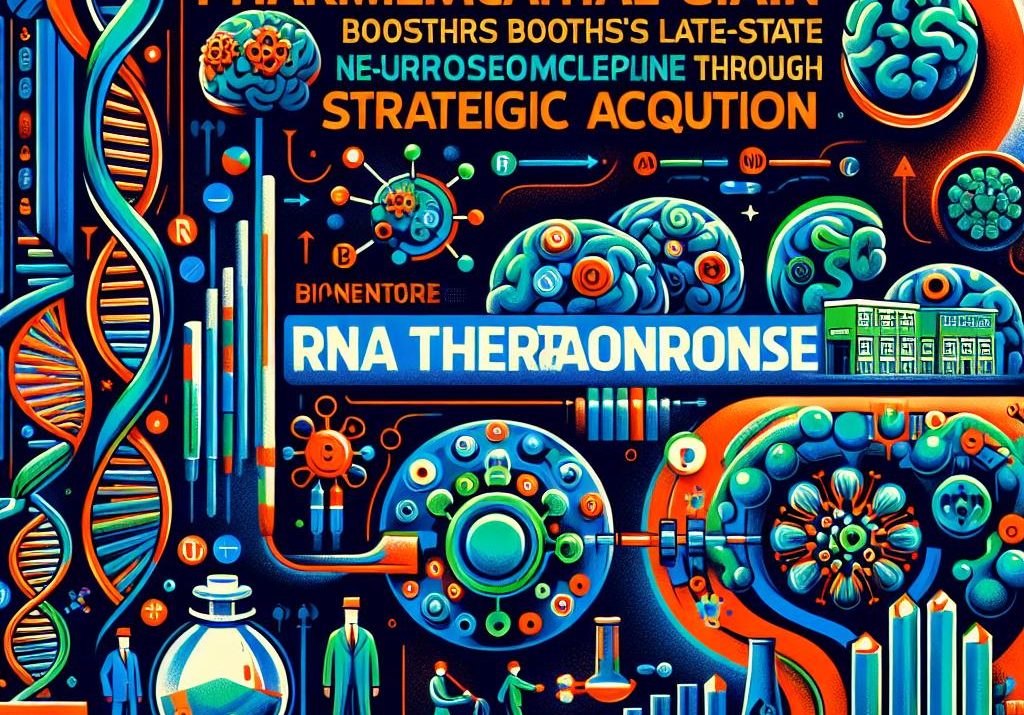Novartis has agreed to acquire Avidity Biosciences for $12 billion in cash, consolidating control of a late-stage pipeline built on antibody oligonucleotide conjugates that deliver RNA therapeutics directly to muscle. The deal, expected to close in the first half of 2026 following the spin-off or sale of Avidity’s early-stage precision cardiology assets, would bring three late-stage neuromuscular programs in myotonic dystrophy type 1, facioscapulohumeral muscular dystrophy, and Duchenne muscular dystrophy into Novartis and lift the company’s 2024–2029 sales growth outlook from 5% to 6%. Novartis frames the move as a pillar of its xRNA strategy, complementing its existing RNA and gene therapy capabilities and paving the way for potential launches before 2030.
The strategic bet is clear: delivery beyond the liver is the next frontier for RNA medicines, and skeletal muscle is one of the highest-value targets. Novartis is choosing to own both clinical assets and the underlying delivery platform, rather than rent optionality through partnerships. The bigger question is whether muscle-directed RNA can convert biomarker-rich early signals into registrational endpoints that withstand regulators’ tightening stance on surrogates, while also satisfying payers that have become increasingly skeptical of high-priced therapies without durable, functional benefit.
This matters now because neuromuscular care sits at the intersection of profound unmet need and rapidly escalating cost pressure. Patients with DM1 and FSHD have no approved disease-modifying therapies; DMD remains fragmented across exon-skipping, micro-dystrophin gene therapy, and steroids, with regulators pressing for confirmatory outcomes data. If AOCs demonstrate repeatable, targeted delivery and clinically meaningful function gains, neurologists and neuromuscular specialists will have a new chronic modality that avoids the one-and-done constraints of AAV gene therapy. Payers, however, will immediately interrogate duration, adherence, and total cost of care. Chronic RNA interventions could invite outcomes-based or annuity models, but that will require robust real-world evidence, longitudinal registries, and clear definitions of response at the patient level.
For competitors, the center of gravity just shifted. Dyne Therapeutics and others advancing muscle-targeted oligonucleotide platforms now face a scaled commercial and medical machine with rare disease experience spanning Zolgensma in SMA to global specialty channel infrastructure. Sarepta, with a gene therapy beachhead in DMD, must prepare for payer comparisons between chronic RNA and one-time gene therapy in subpopulations, particularly as confirmatory data readouts redefine the standard of care. Platform players across RNA, peptide conjugates, and next-generation delivery should expect valuation resets as buyers prioritize assets with both late-stage shots on goal and manufacturing scalability.
The carve-out of Avidity’s precision cardiology programs into a separate entity underscores a broader M&A pattern: de-risk the near-term value thesis by isolating non-core or earlier assets, then scale the core platform in a focused disease cluster. It also aligns with a trend of big pharma stitching together modality portfolios that extend beyond hepatocytes, seeking tissue-specific delivery as the key differentiator rather than the nucleotide chemistry alone.
Execution now becomes the thesis. Medical Affairs will need to standardize endpoint interpretation across trials, educate multidisciplinary clinics on RNA monitoring and adverse event management, and seed RWE programs that tie biomarker shifts to functional outcomes. Commercial teams must pre-wire payer evidence packages for EU joint clinical assessments and U.S. national accounts, stress-testing price–volume–duration scenarios, and patient support to mitigate discontinuation. The decisive question for leaders across the ecosystem is whether muscle-directed RNA can become the default modality in genetic neuromuscular disease, and if so, whether payers will underwrite chronic, high-value regimens at scale in the face of one-time gene therapy alternatives.
Jon Napitupulu is Director of Media Relations at The Clinical Trial Vanguard. Jon, a computer data scientist, focuses on the latest clinical trial industry news and trends.







